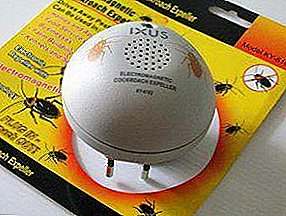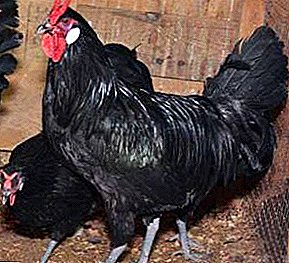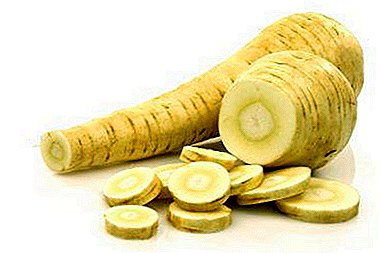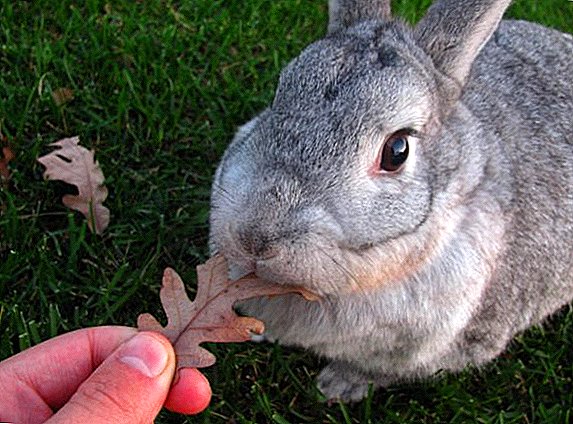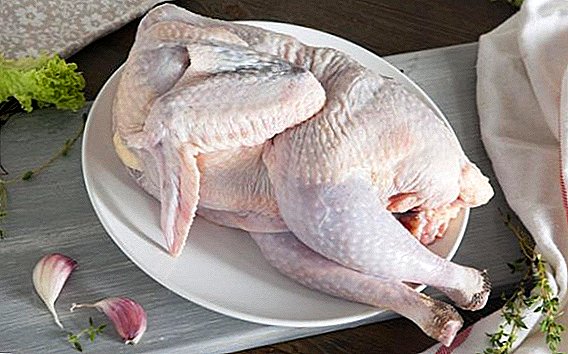 Homemade guinea fowl comes from Africa. The meat of this bird was known to the ancient Greeks and Romans. But the guinea fowl became more widespread in Europe when the Portuguese were brought it again from the African continent in the XV-XVI century. Now this bird is grown by some poultry farmers from different countries of the world, and the price for it is sometimes three times higher than for chicken. Let us consider in more detail how valuable this meat product is and whether there is any harm from its use.
Homemade guinea fowl comes from Africa. The meat of this bird was known to the ancient Greeks and Romans. But the guinea fowl became more widespread in Europe when the Portuguese were brought it again from the African continent in the XV-XVI century. Now this bird is grown by some poultry farmers from different countries of the world, and the price for it is sometimes three times higher than for chicken. Let us consider in more detail how valuable this meat product is and whether there is any harm from its use.
Calorie, nutritional value, vitamins and minerals
AT 100 grams raw guinea fowl contains 110 kcal. Their nutritional value is compiled by:
- proteins - 20.6 g;
- fat - 2.5 g;
- water - 74.44 g;
- carbohydrates - 1.25.
 In the same 100 grams of the product contains the following vitamins:
In the same 100 grams of the product contains the following vitamins:- A - 0.012 mg;
- B1 - 0.067 mg;
- B2 - 0.112 mg;
- B5 - 0.936 mg;
- B6 - 0.47 mg;
- B9 - 0.006 mg;
- B12 - 0.37 mg;
- C - 1.7 mg;
- PP - 8.782 mg.
Minerals:
- potassium - 220 mg;
- calcium - 11 mg;
- magnesium - 24 mg;
- sodium 69 mg;
- phosphorus - 169 mg;
- iron - 0.77 mg;
- manganese - 0,018 mg;
- copper - 0.044 mg;
- selenium - 0,0175 mg;
- Zinc - 1.2 mg.
 This food product contains 10 essential amino acids and 8 essential. Omega-3 and Omega-6 are present among the fatty acids.
This food product contains 10 essential amino acids and 8 essential. Omega-3 and Omega-6 are present among the fatty acids.
Did you know? In the Russian Empire, domesticated guinea fowls began to be grown mainly for decoration in the XVIII century. These royal birds are a real decoration of the farmstead, and their feathers are used in decorative and applied art. In 2007, four breeds of guinea fowls were officially registered: the Volga white, Zagorsk white-breast, cream and gray-speckled. Now you can also see the sale of the Siberian white and blue breeds of these birds.
What is different from chicken meat
Guinea fowl and chicken - related birds with a somewhat similar composition of meat. But guinea fowl meat is more nutritious than that of chicken, and more similar to game - this is the most useful meat of domestic birds. Chicken meat is more high-calorie (116 kcal) and fatty (3.3 g), with almost a third more cholesterol and a little more water.
The concentration of vitamins, minerals and amino acids is greater in guinea fowl. Chicken breasts contain 81.8% of amino acids, and for guinea fowls in the pectoral muscles, their content reaches 95.3%. In addition, the proportion of essential amino acids in guinea fowls is higher.
Chicken meat can cause allergies, and guinea flesh meat is hypoallergenic. 
Beneficial features
Guinea fowl meat has the following beneficial properties:
- few calories and little fat in the presence of high nutritional value. This product fits perfectly into various diets, including for weight loss;
- the easily digestible proteins of this white meat contain all the essential amino acids, many vitamins and minerals, which makes it useful for recuperation after operations, in baby food, both for teenagers and infants;
- high nutritional value with a small amount of cholesterol makes this product very attractive in the menu of the elderly;
- this food product is also a source of selenium, which is necessary for many metabolic reactions of the body (including iodine absorption), increases defenses and has antioxidant activity;
- a group of vitamins B has a good effect on metabolism, central nervous system and regenerative reactions;
- This meat product does not cause allergies and will be appropriate in the nutrition of allergy sufferers and children suffering from diathesis.
Did you know? Meat and eggs of guinea fowls are included by the Food Commission at the United Nations on the list of products most favorable for human nutrition.
Can i eat
This meat product is not quite familiar on our table, and in some cases people are interested in the consequences of its use, especially for children. 
Pregnant
For women who are expecting a child, this product will bring only benefit. The presence of essential for the formation and growth of the fetus amino acids (especially essential), B vitamins and minerals (phosphorus, iron, selenium, etc.), whose concentration in the guinea fowl is higher than in other types of poultry meat, will have a positive effect on the formation of future mother.
After all, the need for pregnant women in the gland, in folic acid (vitamin B9) doubles, and in zinc, iodine, vitamins B6 and B12 - by one third. Phosphorus contained in the meat of this bird is involved in the formation of bones and metabolism, and without such a trace element as selenium, iodine assimilation does not occur.
Important! Doctors do not recommend pregnant women to sit on a vegetarian diet, since other products do not replace it completely. A daily consumption of up to 200 g of meat products will suffice, best of all with vegetables.
It is not desirable to overeat women who are carrying a child, and guinea flesh is less calorie and fatty than chicken. 
Nursing mothers
In order for breast milk to contain all the necessary elements for the healthy development of the baby, the nursing mother must be rationally fed. This is especially important when the lure is still missing and the baby gets everything you need from mother's milk. Babies for weight gain and development need amino acids, vitamins and minerals that are in this product. The nutritional value of guinea fowl meat is higher than that of other poultry, and its fat content is lower than that of chicken, which makes its use useful during breastfeeding, including during the first months.
This dietary product is introduced into the menu at 8-10th day after birth and the first time is taken 2-3 times a week. You should start with small portions (40-60 grams) and gradually increase, watching the reaction of the infant. Usually, there are no allergic reactions to the guinea fowl, but beef and chicken meat can sometimes cause them. It is best to introduce meat in the form of broths and boiled.
When cooking broth 3 minutes after boiling, it is recommended to change the water. Grilled guinea fowl or grilled poultry is hard digested by the digestive system of the baby, it should not be consumed about 3 months after birth. It is also impossible to eat raw product, only with heat treatment, preferably boiled, baked, stewed or steamed. 
Small children
In the meat of running poultry (chicken, turkey, guinea fowl) there is a lot of white meat containing easily digestible proteins, as there is little fat and tendons in it. It also contains the entire set of essential amino acids, which makes these types of meat products most suitable for feeding young children. The most useful part for a baby's diet is breast, as the content of amino acids in it is maximum.
Guinea fowl breast is the most nutritious. Guinea fowl meat in addition does not cause allergies and will fit well into the baby’s menu. But the waterfowl meat consists mainly of dark, less digestible meat, moreover, it is more rigid and fatty.
The chicken and guinea fowl carcass contains three times more iron than beef and also more phosphorus and sulfur. It is best to give it in boiled form and without skin. In three years, you can already extinguish it and not remove the skin.
The first time you can enter it in the lure when the baby is 8 months old, but not earlier than two months after his acquaintance with vegetable and fruit mashed potatoes, cereals. 
Cooking Application
Due to its excellent qualities and beneficial properties, guinea fowl meat has found wide application in cooking. It is stewed, fried, smoked, added to the preparation of spices, vegetables and fruits.
What is cooked in different countries of the world?
Each country has its own preferences in cooking guinea fowls:
- in Europe, this royal bird is popular in the preparation of many dishes. It is usually pre-marinated in fruit syrup, and then fried on the grill or convection oven;
- in Greece, tomatoes, olives, as well as tomato sauce are served to the bird stew;
- Italians prefer guinea fries, fried in pieces with the addition of greens, and also like to stuff a whole carcass with seasoned cheese and bake in the oven;
- Iranians marinate this bird in a spicy mixture and bake on fire;
- in Azerbaijan they make pilaf of it with hot pepper and cilantro on the holiday table.




What is combined
Guinea fowl meat is, first of all, dietary meat. Therefore, the combination of herbs and blends gives it a pleasant taste. Cinnamon, pepper, pepper mixes, rosemary, cilantro and others are well suited for this purpose. Somewhat dryish meat of this bird goes well with vegetable and animal fats. You can start the carcass with apples, dried fruits, lemon.
This product goes well with tomato sauce or juice, and when cooking on the grill - with baked vegetables.
We advise you to read about the composition, properties and use of pepper (black, chili, cayenne, jalapeno), as well as the preparation of ketchup, tomato paste and juice at home.
You can serve guinea fowl with potatoes, cereals (rice, buckwheat, etc.), pasta. 
How many months is better to cut
The rate of growth and weight gain depends on the conditions of maintenance and feed. On average, guinea fowls are given for slaughter in 12-15 months, but for sale they can be cut already from three months. The live weight of adults is 1.5–1.7 kg, caesareans (70 days) weigh 0.87 kg.
The meat of male guinea fowl is tougher than that of females, so they are handed over for slaughter no later than 5 months. Females are given for slaughter after egg-laying. In the second year, this bird is not left. The meat of a young bird is more tender, and the old one is more rigid.
Tips for poultry farmers: all about breeding guinea fowls at home; how to bring guinea fowl in a home incubator.
How to choose when buying
When buying guinea fowl meat should pay attention to next moments:
- if the bird is large enough, then it is probably too old and more than 5 months old. This means that the meat will be tougher than that of the young guinea fowl;
- if possible, choose a fresh carcass, as the frozen food value decreases;
- on the surface of the carcass should be no damage and blood clots;
- the product should not smell like rotten stuff and generally produce unacceptable odors;
- if the color is not pinkish or creamy pinkish - this should also alert;
- when pressing with fingers in the sirloin part, the dent formed should quickly disappear, otherwise it indicates a violation of the storage conditions of the product, and the purchase should be abandoned;
- slightly bluish tint should not be embarrassing, this is caused by a small amount of subcutaneous fat.
Important! First of all, for cooking, the guinea fowl carcass should be bought from trusted vendors in specialized stores. Any products at such points of sale pass laboratory tests and have a certificate of quality, while in spontaneous markets you can buy low-quality products.
How to store at home
Fresh guinea fowl meat is stored for no more than three days at temperature conditions up to +2 ° С. In the freezer at -18 ° C, the bird carcass is stored no more than a year, chopped pieces last 9 months, and in finished form up to 3 months. On the shelf of the refrigerator (not more than +4 ° C) cooked meat dishes from this bird are stored for up to two days. 
Can harm
Guinea fowl meat is a very useful product, and there is only one contraindication to it - individual intolerance.
Like any other food products, the meat of this bird is better not to eat in large quantities to avoid trouble from overeating - discomfort and pain in the stomach, upset, and so on.
Cooking secrets
When cooking dishes from carcasses guinea fowl can use tips from experienced chefs:
- in the roaster such a bird is extinguished for about 60 minutes on medium heat;
- fry in a skillet for 30-40 minutes over medium heat;
- on convection oven on high heat the cooking process takes 50-60 minutes;
- bake in the oven at a temperature of 200 ° C for about 60 minutes;
- if the guinea fry is not cooked in whole, but in parts, then the cooking time is already changing - the breast is baked in the oven for 20-25 minutes, and on a grill or frying pan for 15-20 minutes. The legs and thighs are cooked in the oven for 30-40 minutes, and on the convection oven or pan - 30 minutes;
- It is better to bake this bird in the sleeve, since the dish turns out to be more juicy, and the oven remains cleaner;
- if the meat is pre-marinated (in mustard, wine, etc.), it will be more tender and juicy;
- To improve the taste, poultry carcass poured with lemon juice, rubbed with salt and pepper, and you can also rub with chopped garlic or orange juice, mixed with olive oil, spices;
- apples can be put inside the bird (Antonovka or Semerenko) and dried fruits;
- Before smoking, soak the carcass well in saline for several hours to make the meat more juicy. In the process of smoking, it is recommended to add juniper twigs - they will give the dish an unforgettable taste and aroma;
- before serving, the carcass is better divided into portions and serve the sauce to taste;
- to dry the meat of this bird more juicy, it is pre-soaked in hot water or marinated with the addition of olive oil and spices.
Recipes cooking guinea flesh meat
Grilled guinea fowl in the oven
Red rice and guinea fowl
Guinea fowl meat is an excellent dietary product that contains a large set of easily digestible proteins, vitamins and minerals, which has practically no contraindications and has excellent taste. It will be useful in the menu of young children and the elderly, pregnant and lactating women. Dishes from it will delight any table - both dietary and festive.



